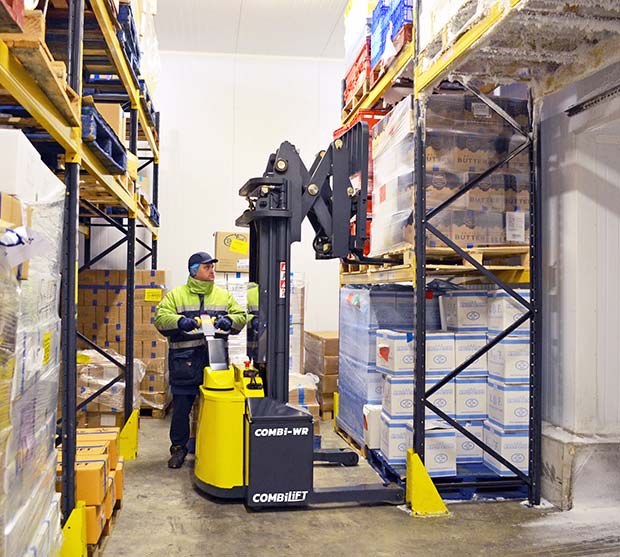Irish manufacturer Combilift first made its name in the materials handling sector when it launched its initial product, the C4000 – the world’s first IC engine powered allwheel drive multi-directional forklift – in 1998. In the 20+ years since, the company has grown at an unparalleled pace, introducing two new models a year on average. Now acknowledged as an innovative pioneer in its sector, Combilift exports its groundbreaking, customised products to 85 countries.
 Early models were designed for the safe, space saving and productive handling of long and bulky loads, and these multidirectional trucks, with capacities from 2.5t upwards, still constitute a major part of Combilift’s production. As the portfolio expanded, Combilift has stayed true to its original ethos whilst introducing trucks for pallet handling and narrow aisle operation such as the Aisle Master articulated forklift.
Early models were designed for the safe, space saving and productive handling of long and bulky loads, and these multidirectional trucks, with capacities from 2.5t upwards, still constitute a major part of Combilift’s production. As the portfolio expanded, Combilift has stayed true to its original ethos whilst introducing trucks for pallet handling and narrow aisle operation such as the Aisle Master articulated forklift.
More recently, the Combilift designers turned their attention to pedestrian operated trucks, and now offer a wide range which are particularly suited to the demands of wholesale and back of store operations. Many companies are looking to replace ride-on forklifts with pedestrian operated ones: their lower speed enhances health and safety, particularly in areas where other personnel or members of the public may be present. It is also quick and cost effective to train operators to use these trucks which is a further advantage. Cold store versions are also available if required.
Combilift’s first pedestrian models were the Combi-WR and its multidirectional counterpart the Combi-WR4. These have lift capacities of 1,450kg, come with individual lift heights and are the only pedestrian reach stackers able to work in aisle widths of just 2m pallet to pallet. These were followed by the 1,000kg Combi-CS counterbalance stacker, and 2018 saw the introduction of the heavier duty Combi-PPT powered pallet truck with capacities from 3,000kg up to 16,000kg.
A key feature of all of these models is Combilift’s unique, patented multiposition tiller arm. This can be turned to the left or right, allowing the operator to remain at the side, providing full visibility of the load and forks and enabling greater awareness of the surroundings. This sideways position eliminates any crush risk when the operator is working in narrow confines, guaranteeing the highest levels of operational safety.




Comments are closed.